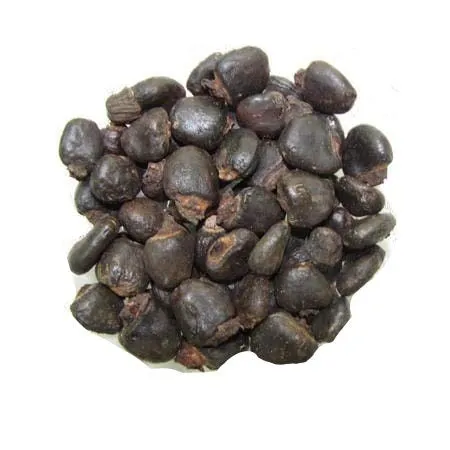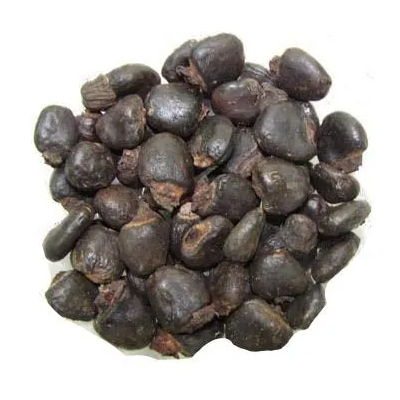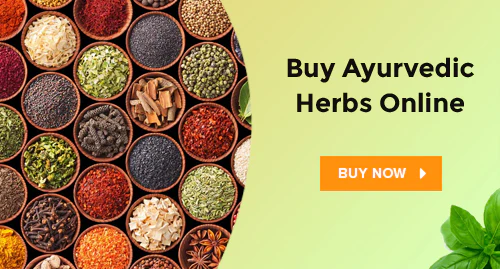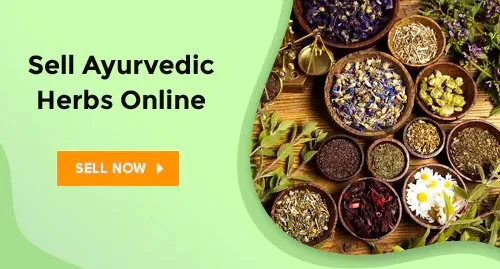On This Page
Bhallataka: A rejuvenator in degenerative diseases
Introduction
Bhallataka botanically known as Semecarpus anacardium is used for various ailments since ancient times. Bhallatka fruit comes under Upvisha Dravya. It is very famous with the “Marking nut” name as it is used for marking clothes by Dhobis. Its nut contains various active principles like phenolic compounds, bioflavonoids, Bhilwonals, Minerals, Vitamins, amino acids, etc. Due to these active principles, Bhallataka exhibits various activities like anti-inflammatory, CNS stimulant, anti-cancer, anti-microbial, hair growth promoter, anti-atherogenic, hypoglycemic, etc. It must always keep in mind that Bhallataka should always be used after proper Shodhana (purification) to treat various disorders like Nadi Dourbalaya (nervous debility), Apasmara (epilepsy), Gridhasi (Sciatica), heart disease (Hridya Roga), etc. otherwise improper contact may cause contact dermatitis.
Basonym of Bhallataka
भल्ल इवातति, तैक्षण्यात् ।
Bhallataka is very sharp like that of the spear.
Synonyms of Bhallataka
- According to morphology
अग्निमुखी – अग्नि वद अ रक्तपीतं मुखं शीर्षभागो अस्य ।
Fruits are attached to the orange-colored fleshy cup.
धनुर्बीज: – धनुरिवबीजमस्य ।
Fruits are obliquely ovoid.
तैलबीज: – तैलं बीजे अस्य ।
The fruit has oily contents.
- According to properties and action
वातारि- वातनाशन: ।
Bhallataka pacifies Vata.
अग्निक: – अग्निवत दहनस्तापनश्च।
Bhallataka causes burns and increases temperature.
अरुष्कर: – अरु व्रण करोतीति ।
Bhallataka fruit causes blisters.
कृमिघ्न: – कृमीन् हन्तीति ।
Bhallataka kills Krimi.
भल्ली – भल्ल इव तीक्ष्णो रसो अस्य ।
The Rasa (juice) of Bhallataka is very corrosive.
भेदन: – भिनत्य अर्बुदादिनिति ।
Bhallataka alleviates Arbuda (cancerous growth).
रंजक: – रञ्जयति त्वगादिनिति।
Bhallataka juice causes redness to the skin.
शोफकृत – शोफं करोति स्पर्शादिति।
Bhallataka juice induces swelling if it comes in contact with skin.
वीर वृक्ष: – वीर्यवान वृक्ष: ।
Bhallataka is a very sharp and potent plant.
Regional names of Bhallataka
- Indian marking nut (English)
- Hali- el- Kalb (Arab.)
- Baladur (Persian)
- Bhela (Bengali)
- Bhilawa (Hindi)
- Geru, Karigeru (Kannada)
- Tenparakaa (Malayalam)
- Bibha, Bimba (Marathi)
- Senkotai (Tamil)
- Bhallatarmu (Telugu)
Botanical Name
Semecarpus anacardium Linn.
Semecarpus is derived from the Greek word Simeon means marking and carpus word is derived from the Greek word carpos which means nut (black juice of the nut is used for making or tracing designs on cloth).
Family
Anacardiaceae (Amra Kula)
Ayurveda reference for Bhallataka (Semecarpus anacardium Linn.)

Scientific classification of Bhallataka
| Kingdom | Plantae |
| Class | Dicotyledons |
| Subclass | Polypetalae |
| Series | Disciflorae |
| Order | Sapindales |
| Family | Anacardiaceae |
| Genus | Semecarpus |
| Species | anacardium |
Classification of Bhallataka as per Charaka and Sushruta
- Charaka: Deepaniya Mahakshaya, Kusthghana Mahakshaya, Mutra Sangrahniya Mahakshaya
- Sushruta: Nyagrodhadi Gana, Mustadi Gana
Bhallataka’s description in Brihtrayi
| Charaka | Shusruta | Vagbhata (Ashtang Hridya) |
| C. S. Su. 3/ 4 | S. S. Su. 38/ 47, 53 | A. H. Su. 6/ 134 |
| C. S. Su. 4/ 6, 33 | S. S. Su. 44/ 6 | A. H. Su. 15/ 40 |
| C. S. Su. 18/ 3 | S. S. Su. 45/ 122 | A. H. Chi. 1/ 154 |
| C. S. Su. 26/ 122 | S. S. Su. 46/ 249, 422 | A. H. Chi. 3/ 135 |
| C. S. Su. 27/ 162 | S. S. Chi. 1/ 89, 92, 105 | A. H. Chi. 5/ 29 |
| C. S. Vi. 7/ 24 | S. S. Chi. 4/ 32 | A. H. Chi. 8/ 162 |
| C. S. Vi. 8/ 149, 151 | S. S. Chi. 6/ 13, 17, 18 | A. H. Chi. 10/ 47 |
| C. S. Sa. 8/ 58 | S. S. Chi. 9/ 6, 7, 27 | A. H. Chi. 12/ 18 |
| C. S. Chi. 1. 2/ 13, 14, 15, 16, 17, 19 | S. S. Chi. 10/ 4, 14 | A. H. Chi. 13/ 38 |
| C. S. Chi. 3/ 266 | S. S. Chi. 11/ 9 | A. H. Chi. 14/ 80 |
| C. S. Chi. 5/ 143, 146 | S. S. Chi. 12/ 5 | A. H. Chi. 15/ 70 |
| C. S. Chi. 6/ 38, 45 | S. S. Chi. 13/ 14 | A. H. Chi. 18/ 26, 30 |
| C. S. Chi. 7/ 82, 113 | S. S. Chi. 17/ 41 | A. H. Chi. 19/ 13, 45, 53 |
| C. S. Chi. 12/ 29 | S. S. Chi. 20/ 54 | A. H. Chi. 20/ 16 |
| C. S. Chi. 13/ 156 | S. S. Chi. 27/ 7, 8 | A. H. Ka. 1/ 15 |
| C. S. Chi. 14/ 56, 71 | S. S. Chi. 31/ 5 | A. H. U. 3/ 47 |
| C. S. Chi. 15/ 147, 178 | S. S. Ka. 1/ 71 | A. H. U. 11/ 53 |
| C. S. Chi. 21/ 125, 129 | S. S. Sa. 10/ 5 | A. H. U. 24/ 30 |
| C. S. Chi. 22/ 47 | S. S. U. 34/ 3 | A. H. U. 39/ 66, 72, 75, 81, 82, 151 |
| C. S. Chi. 23/ 100 | S. S. U. 36/ 7 | A. H. U. 40/ 49 |
| C. S. Chi. 26/ 268 | S. S. U. 41/ 46, 50 | |
| C. S. Chi. 27/ 32, 44 | S. S. U. 48/ 29 | |
| C. S. Chi. 28/ 167 | ||
| C. S. Chi. 30/ 149 | ||
| C. S. Ka. 1/ 22 |
Bhallataka’s description as Arushkara in Brihtrayi
| Charaka | Shusruta | Vagbhata (Ashtang Hridya) |
| C. S. Su. 4/ 13 | S. S. Su. 46/ 190, 195 | A. H. Su. 7/ 37 |
| S. S. Chi. 6/ 19 | A. H. Su. 10/ 31 | |
| S. S. Chi. 9/ 5 | A. H. Su. 16/ 23 | |
| S. S. Chi. 19/ 14, 18 | A. H. Chi. 6/ 75 | |
| S. S. Ka. 5/ 70 | A. H. Chi. 8/ 23, 35, 140, 155 | |
| S. S. Ka. 6/ 3 | A. H. Chi. 12/ 20 | |
| S. S. U. 9/ 35 | A. H. Chi. 13/ 34 | |
| S. S. U. 12/ 35 | A. H. Chi. 19/ 12, 26, 43, 44, 47, 81 | |
| A. H. Chi. 20/ 32 | ||
| A. H. Chi. 21/ 59 | ||
| A. H. Chi. 39/ 68, 80, 169 |
Bhallataka’s description as Sphothetu in Brihtrayi
Vagbhatta: A. H. Chi. 20/ 11
Historical background of Bhallataka
The earliest references to Bhallataka are found in the Panini sutra (Pa. Un. Bho. 2/ 2/ 42). Charaka emphasized the Rasayana property of Bhallataka and described 10 types of preparations with it. He considered Bhallataka as the best drug to cure diseases related to Kapha. Sushruta mentioned it as the drug of choice in the management of Arsha along with Kutaja. Vagbhata quoted Bhallataka as the best drug of Sushka Arsha (non-bleeding piles). Several Rasayana Yogas are described with Bhallataka in the Brhat Trayi texts. Sushruta identified its flowers, fruit, and juice as the causative factors of “Agantuka Sotha” (inflammation). Bhallataka Asthi shall be considered for Deepaniya’s purpose while Bhallataka Phala Majja (kernel) as Rasayana.
Controversy regarding Bhallataka
The description of Nadi Bhallätaka is mentioned in Sushruta Samhita (Sushruta Samhita Sutra Sthana. 46/ 249 & Uttara Tantra 34/ 3). Thakurji is of the opinion that it may belong to the Ficus genus. He also expresses his view that Nadi Bhallataka may be the ‘Nandi’ delineated by Vagbhata (A. H. Su.15/ 41). However, Nandi remains to be a controversial plant (C. S. Su. 27/ 111, S. S. Su. 46/ 249, S. S. Ut. 34/ 3, A. H. Su. 6/ 77, 92, A. H. Su. 15/ 41).
External morphology of Semecarpus anacardium
- Habit: Bhallataka is a medium-sized tree that grows up to 30-50 feet.
- Bark- Bark of Bhallataka is gray and exudes an irritant secretion on incising.
- Leaves- Leaves of Bhallataka are simple, 30-60 cm long, 12-30 cm broad, obovate to oblong, glabrous above, ashy gray or buff and pubescent beneath, and developed on the tip of the branch, and deciduous,
- Inflorescence- compound panicle.
- Flowers- Small, greenish-yellow, dioecious, with long flower stalk, petals are 5- 6, stamens 5- 6, the ovary is rudimentary in male flowers and superior in case of female flowers.
- Fruit- Drupaceous nut, 2-3 cm long, heart-shaped, green when raw and turn to black on ripening. Fruits are attached to a fleshy orange-colored receptacle, which is edible.
- Seeds- Pendulous.
Fruit contains black, oily, and highly vesicant juice used traditionally to mark the clothes.
Note: Sida acuta and Sida spinosa is also used under the name of Bala whose details are presented below:
Flowering and fruiting time
Flowering round the year, mostly during May-June, Fruits ripen from November to February.
Distribution of Bhallataka
It is found throughout the hotter parts of India and in the Himalayas from Sirmur to Sikkim ascending to 1100 meters height from sea level, found in Andhra Pradesh, Bihar, Kerala, and Uttar Pradesh. Bhallataka is distributed in the Sub-Himalayan tract from the Bais eastwards and ascends in the outer hills up to 2,500 feet in regions of Assam, Khasia Hills, Central India, Chittagong, and the Western Peninsula, Eastern Archipelago, North Archipelago.
Varieties of Bhallataka
Susruta and Nighantu Ratnakara describe two varieties of Bhallataka:
- Bhallataka
- Nadi Bhallataka
Botanically other species of Bhallataka are as follows:
- Semecarpus albescens
- Semecarpus travancorica
- Semecarpus auriculata
- Semecarpus heterophylla
- Semecarpus kurzii
- Semecarpus pubescens
- Semecarpus obscura
- Semecarpus parviflora
The useful part of Bhallataka
Fruit
Fruit is heart-shaped, obliquely ovoid, drupaceous nut, with a fleshy pear-shaped receptacle. It is up to 2.5 cm long and 2 cm broad. The surface is black or brownish-black, glossy, and sometimes shriveled. Internally the nut contains a viscous oily liquid of black color.
Selection of Bhallataka for use
Fruit with the below-given characters should be collected for use:
- Paripakva, Poorna Rasa (Fully matured)
- Anupahata (undamaged)
- Anamaya (disease-free)
- Poorna Virya (Fresh and potent)
- Poorna Pramana (Fruit of appropriate size)
- Pakwa Jambu Phala (Bhallataka fruit should be similar to the ripe Jamun fruit
- Pavana Hata (fruit should be fallen by winds)
- Anyahrita (fruit should not be plucked directly from the Bhallataka plant)
- Nirakshiptham Nimanjjathi (the Bhallataka fruit after collection must be a sank in water otherwise discarded)
Collection time of Bhallataka
Acharya Charaka- Bhallataka should be collected in Suchi- Jyesth (i.e in May- June) and should be used in Saha- Agrahanya (i.e in November – December).
Ashtanga Sangraha- As Acharya Charka mentioned.
Ashtanga Hridya- Collection of the fruit of Bhallataka should be done in Grisham Ritu (summer season) and Bhallatakaa should be used in Hemant Ritu (winter season).
Preservation of Bhallataka
Bhallataka can be preserved in Dhanya Rashi, Masha, and Yava for up to 4 months.
Important phytoconstituent of Semecarpus anacardium
Nuts- Bioflavanoids A, B & C, tetra hydrobustaflavone, tetrahydromentoflavone, nallaflavone etc.
Nutshell- Anacardic acid, bhilawanols, galluflavanone, jeediflavanone, etc.
Kernel oil- Linoleic, myristic, oleic, palmitic & stearic acids.
Fruits- Nicotinic acid, riboflavin, thiamine, and essential amino acids.
Leaves- Amentoflavone.
Recent research on Bhallataka
- The objective of the study was to determine the anticancer efficacy of Ayurvedic preparation made of Semecarpus anacardium (SA) nuts. Five groups of rats were used for the study. The study demonstrated the efficacy of Semecarpus anacardium nut milk extract for the treatment of hepatocellular carcinoma either alone or along with chemotherapy. Joseph JP’1, Raval SK, Sadariya KA, Jhala M, Kumar P. Anticancer efficacy of Ayurvedic milk extract of Semecarpus anacardium nuts on hepatocellular carcinoma in Wistar rats. Afr J Tradit Complement Altern Med. 2013 Aug 12; 10 (5): 299- 304.
- To evaluate the hypolipidemic effect of Semecarpus anacardium Linn nut milk extract (SA) in the high cholesterol-fed hyperlipidemic rat model. SA demonstrated remarkable hypolipidemic activity in high cholesterol-fed hypercholesterolemic rats. The potential anti- hyperlipidemic action is plausible, due to its underlying antioxidant role. Vinayagam KS, Khan HB, Keerthiga G,Palanivelu S, Panchanatham. Hypolipidemic effect of Semecarpus anacardium in high Cholesterol fed hypercholesterolemic rats. Chin J Integ Med. 2012 Dec 3.
- Semecarpus anacardium Linn. nut milk extract (SA) was evaluated for its anti-diabetic role in type 2 diabetic rats. Type 2 diabetes was induced in rats by feeding a high-fat diet for 2 weeks followed by a single intraperitoneal injection of streptozotocin 35 mg/kg body weight. Diabetic rats were treated with SA orally at a dosage of 200 mg/kg body weight daily for 30 days. The potential antihyperglycemic action of SA is plausibly due to its underlying antioxidant role. Khan HB, Vinayagam KS, Renny CM, Palanivelu S, Panchanadham S. Potential antidiabetic effect of the Semecarpus anacardium in a type 2 diabetic rat model. Inflammopharmacology.2013 Feb; 21 (1):47-53. DOI: 10.1007 /s10787-012- 0136- 6. Epub 2012 May 4.
- The wound healing promoting property of stem bark methanol extract of Semecarpus anacardium was evaluated at three different dosages by excision, incision, and dead space wound models using Wistar albino rats. Methanol extract at 100 mg kg (-1) exhibited significant Wound healing activity but was lesser than standard, whereas, animals treated will 50 and 75 mg showed moderate activity. Lingaraju GM Krishna, V Joy Vi Pradepa K, Venkatesh, Babu PS. Wound healing promoting activity of stem bark ex Res. 2012:26 (24): 2344- 7. doi: 10. 1080/ 14786419. 2012. 656108. Epub 2012 Feb 10.
- Anticancer activity
- Cardioprotective activity
- Nootropic activity
- Hepatoprotective activity
- Antimicrobial activity
- Analgesic activity
- Anti-inflammatory activity
- Spermicidal activity
- Hypoglycemic activity
- Anti- helminthic
Rasa Panchaka of Bhallataka
| Rasa (Taste) | Katu (pungent), Madhura (Dhanwantri Nighantu), Kashaya (Bhava Prakasha Nighantu) |
| Guna (Virtue) | Laghu (light), Snigdha (oily), Teekshna (sharp) |
| Virya (potency) | Ushana (hot potency) |
| Vipaka (post-digestion) | Madhura (sweet) |
Rasa Panchaka of Bhallataka Pakwa Phala
| Rasa (Taste) | Madhura (Sweet) |
| Guna (Virtue) | Guru (heavy), Ruksha (dry) |
| Virya (potency) | Sheeta (cold potency) |
| Vipaka (post-digestion) | Madhura (sweet) |
Rasa Panchaka of Bhallataka Asthi
| Rasa (Taste) | Madhura (sweet), Tikat (bitter), Kashaya (astringent) |
| Guna (Virtue) | Laghu (light), Snigdha (oily), Teekshna (sharp) |
| Virya (potency) | Ushana (hot potency) |
| Vipaka (post-digestion) | Katu (pungent) |
Rasapanchaka of Bhallataka in various classics
| Properties | R. N | K. N | B. P. N | D. N | N. A | G. R |
| Rasa (Taste) | Kashaya, Tikat, Madhura | Kashaya, Tikat, Madhura | Kashaya, Madhura | Kashaya, Tikat | Kashaya, Madhura | Kashaya, Madhura |
| Guna (Virtue) | Laghu, Snigdha | Laghu, Snigdha | Laghu, Snigdha | Laghu, Snigdha | Laghu, Snigdha | Laghu, Snigdha |
| Virya (potency) | Ushana | Ushana | Ushana | Ushana | Ushana | Ushana |
| Vipaka (post-digestion) | Madhura | Madhura | Madhura | Madhura | Madhura | Madhura |
Dosha Karma of Bhallataka
Kapha- Vata Hara
Bhallataka is Kapha Hara because of Katu Rasa and Ushana Virya.
Vata Hara because of Ushana Virya, Madhura Vipaka, and Snigdha Guna.
Karma (Actions) of Bhallataka
Bhallataka phala- Pachana, Chedana, Bhedana, Medhya, Dipana, Vrnahara, Kustahara, Arsoghna, Jwarahara, Krmighna, Sukrala, Grahi and Balya.
Bhallataka majja- Vrishya, Brhmani, Dahasamaka, Tarpaka, Dipana.
Bhallatak Asthi- Pachaka, Medhya, Dipaka, Krmighna.
Prayogarha Vyadhi (Therapeutic indication) of Bhallataka
Bhallataka is the drug of choice in Arsha.
Bhallataka Phala- Arshas, Kustha, Grahani, Gulma, Sopha, Anaha, Jwara, Krimi, Agnimandya, Shwitra, Krimi, Vrna.
Bhallataka Maija- Karsya, Klaivya, Daha, Aruchi.
Bhallatakasthi- Kustha, Arsas, Grahani, Gulma, Sopha, Anaha, Jwara, Krmi.
Aamyik Prayog (Therapeutic uses) of Bhallataka
Kustha (Skin disorder):
- Food and preparations of ghee containing Bhallataka, Triphala, and Nimba should be used. (Charaka Samhita Chikitsa Sthana. 7/ 82)
- In Kustha located in Medas regular use of Bhallataka, Shilajatu, Makshika (Bhasma), Guggulu, Aguru, Tuvaraka, Khadira, Asana, and Ayaskrti is wholesome. (Sushruta Samhita Chikitsa Sthana. 9/ 6)
- In Kaphaja Kustha, Ghee cooked with Bhallataka, Haritaki and Vidanga is efficacious. Oil of Tuvaraka or Bhallataka is useful for all. (Sushruta Samhita Chikitsa Sthana. 9/ 7)
- One should use Tuvaraka seeds, Bhallataka, Bakuci, Chitraka root and Shilajatu by the method of Rasayana. (Ashtanga Hridya Chikitsa Sthana. 19/ 53)
- In all types, the oil of Bhallataka or Tuvaraka or Sarshapa should be taken or ghee cooked with Vidanga, Haritaki, and Bhallataka. (Ashtanga Hridya Chikitsa Sthana. 19/ 12)
Shwitra (Vitiligo): Bhallataka nuts should be crushed, kept overnight in cow urine, and then dried. This is repeated thrice. Then it is pounded finely and made into a paste which, mixed with Snuhi latex, is applied on the spot. (Ashtanga Hridya Chikitsa Sthana. 20/ 11)
Arsha (Piles):
- A saturating drink of buttermilk mixed with Bhallataka or Bilva and Sunthi or Yavani and Chitraka should be given. (Charaka Samhita Chikitsa Sthana. 14/ 70)
- Bhallataka- Kalpa. (Shusruta Samhita Chikitsa Sthana. 6/ 17)
- Bhallataka- Taila. (Shusruta Samhita Chikitsa Sthana. 618)
- Bhallataka and Kutaja bark are the best remedies for dry and bleeding piles respectively. Buttermilk is wholesome in all types and all seasons and acts as a tonic and laxative. (Ashtanga Hridya Chikitsa Sthana. 8/ 62, Ashtanga Hridya Uttara Tantra. 40/ 49)
- One should take sesamum combined with Bhallataka which improves digestion and destroys Kustha and piles. (Vrinda Madhava. 5/ 10)
Krimi Roga (Guinea worm): Bhallataka one nut is pounded finely and mixed with a double quantity of jaggery. It is taken to eliminate the painful guinea worm. (Siddha Bhaishjya Manni Mala. 4/ 884)
Pliha Vriddhi (Splenomegaly): Bhallataka, Haritaki, and Jiraka are mixed with jaggery and made into a sweet bolus. It alleviates the disease, but it is severe. (Vrinda Madhava. 37/ 45)
Gandmala (Scrofula): Paste containing Sarsapa, Nimba leaves and Bhallataka- all burnt and mixed with goat’s urine should be applied to the affected part. It destroys scrofula. (Sharangdhara Samhita. 3. 11. 98)
Urustambha (Stiffness in thighs): Pippali, Pippali Mula, and Bhallataka nuts are mixed to make a paste with honey should be taken. Thus, one is freed from Urustambha. (Vrinda Madhava. 5- 10, Raja Amrittanda. 22/ 1)
Vatavyadhi (Vataja Disorder): Tila and jaggery 640 gm each and Bhallataka 80 gm is taken. Intake of this alleviates Vatavyadhi gradually. (Siddha Bhaishjya Mannimala. 4/ 462)
Kesh Patak (As depilatory): Bhallataka oil and Snuhi latex mixed make a good depilatory agent. (Siddha Bhaishjya Mannimala Chikitsa 1. 106)
Varnya (For regaining normal color): Bhallataka-taila. This should be applied to the wound scar. (Sushruta Samhita Chikitsa Sthana. 1. 90- 93)
Rasayana (Rejuvenator):
- Bhallataka- Rasayana. (Charaka Samhita Chikitsa Sthana. 1/ 2. 13- 19, Ashtanga Hridya Uttara Tantra. 39/ 66- 83)
- Bhallataka- Vardhamana. (Vrinda Madhava. 69. 23- 27)
- One should take, according to strength, Bhallataka oil for a month. This makes him free from all complications and long-lived. (Vrinda Madhava. 69- 28)
Vajikarana (Aphrodisiac): Milk 1.28 liters should be cooked with four Bhallataka nuts. It acts as a potent aphrodisiac. (Ashtanga Sangreha Uttara Tantra. 50/ 29)
Khalitya (Alopecia): After venesection, a thick paste of Dhattura leaves with Bhallataka juice should be applied locally. (Ashtanga Hridya Uttara Tantra. 28- 30)
Krimi (Worms):
- Bhallataka- Taila should be used as intake or enema. (Ashtanga Hridya Chikitsa Sthana. 20/ 32)
- Bhallataka- Taila mixed with Vidanga in half quantity and heated in the sun should be taken. It acts as a good anti-helminthic. (Gada Nigreha. 2. 6. 39)
Vishakta (Poisoning): In the case of poisoned collyrium, flowers of Bhallataka should be applied. (Sushruta Samhita Kalpa Sthana. 1/ 71)
Visham Jwara (Malarial fever): Triphala, Haritaki, Guduci, Pippali, and Bhallataka should be used separately with jaggery on the day of the advent of fever. (Ashtanga Hridya Chikitsa Sthana. 152- 53)
Gulma (abdominal tumor): Ghee cooked with paste and decoction of Bhallataka and mixed with sugar should be taken. It alleviates Rakta Gulma, the same taken with honey is efficacious in Gulma caused by Kapha. (Chakra Dutta. 30/ 97)
Sodhana (Purification) of Bhallataka
- The fruit of Bhallataka (Semecarpus anacardium) is cut into pieces by crushing and kept in Ishtika churna (Brick powder) or rubbed with brick powder. Then washed clearly with hot water. This purifies Bhallataka.
- Swedana is done with Narikela Ambu (Coconut water) is Dolayantra.
The adverse effect of Bhallataka
If Bhallataka is taken in a higher dosage it will result in the following conditions:
- Blisters on the tongue and throat
- Increased thirst and sweat
- Heartburn
- Gastro-intestinal tract irritation
- Oliguria
- Skin eruptions and burning
- Swelling
- Renal failure
Antidote
- The main antidote of Semecarpus anacardium is Terminalia bellerica i.e Bibhitaka.
- Coconut oil will be a good antidote.
- Application of Meghanada Rasa (Juice of Amaranthus tricolor) with-Navaneeta (Butter).
Fatal Dose- More than 10 gm.
Fatal Period- 12-24 hrs.
Few remedies can be applied during the adverse effect of Bhallataka (Ati- Matra Lakshana Chikitsa)
- If consumed, then gastric lavage should be done.
- In case of dehydration- IV fluid administration.
- Antacid therapy
- Jiraka (Cumin seed) and Saindhava Lavana (Rock salt to be given.
- Coriander leaves paste is applied.
Matra (Therapeutic administration and dosage) of Bhallataka
- Fruit (Phala)- 3- 6 grams (Dravya Guna Vigyana)
- Phal Majja – 1 Masha/ 1 gram (Vana Aushadhi Nidarshika)
- Taila (oil)- 10- 20 drops (Chakradutta)
- Taila (oil)- 1- 2 drops (Bhava Prakasha Nighantu)
- Avleha – ¼ to 1/ 2 Tola (Bhava Prakasha Nighantu)
- Ksheer Paka – 1- 2 Tola (Bhava Prakasha Nighantu)

Have A Health Issue?
Consult Online
- Dr. Sahil Gupta (B.A.M.S., M.H.A.)
Ayurvedic Allergy Specialist
CEO & Founder of IAFA®
Classical reference of Bhallataka
Bhava Prakasha Nighantu Haritkyadi Varga- 228
Synonyms
भल्लातकं त्रिषु प्रोक्तमरुष्को अष्करो अग्निक:।
तथैव अग्निमुखीभल्ली वीरवृक्षश्च शोफकृत् । ।
Bhava Prakasha Nighantu Haritkyadi Varga- 229- 231
Properties and action
भल्लातक फलं पक्वं स्वादुपाकरसं लघु ।
कषायं पाचनं स्निग्धं तीक्ष्ण उष्ण छेदि भेदनम् ।।
मेध्यं वन्हिकरं हन्ति कफवात व्रणोदरम् ।
कुष्ठा अर्शो ग्रहणी गुल्म शोफा अनाह ज्वर कृमीन् ।।
तन्मज्जां मधुरा वृष्या बृहणी वातपित्तहा ।
वृन्तमारुष्करं स्वादु पित्तघ्नं केश्यमग्रिकृत् ।।
Bhava Prakasha Nighantu Haritkyadi Varga- 232
भल्लातक सामान्य गुण
भल्लातक: कषायोष्ण: शुक्लो मधुरो लघु: ।
वात श्लेष्मोदरानाह कुष्ठ अर्शो ग्रहणी गदान् ।
हन्ति गुल्म ज्वर श्वित्र वन्हि मांद्य कृमि व्रणान्।।
Dhanwantri Nighantu Chandanadi Varga- 129
भल्लात: कटु तिक्तोष्णो मधुर: कृमिनाशनः ।
गुल्म अर्शो ग्रहणी कुष्ठान हन्ति वात कफामयान् । ।
Kaiydeva Nighantu Aushadi Varga, 496- 500
भल्लातको लघुस्तिक्त: कषायो मधुरोहिम ।
ग्राही पाके कटु: पित्त कफास्रघनो अनिल प्रद: ।।
भल्लातक फलं पक्वं स्वादुपाकरसं गुरु।
विष्टम्भी बृहण रुक्षं हिमं वातबलासकृत्।।
शुक्रलं दुर्जरम बल्यं रक्त पित्त विनाशनम।
तस्यास्थि मधुरं तिक्तं कटु पाक रसं लघु।।
कषाय पाचनं स्निग्धं तीक्ष्णोष्ण छेदि भेदनम् ।
मेध्यं वन्हिकरं हन्ति कफवात व्रणोदरम।
कुष्ठ अर्श ग्रहणी गुल्मशोफानाहज्वरकृमीन् ।
तन्मज्जा मधरो वृष्यो बृहणी वातपित्तहा।
Raja Nighantu Aamradi Varga, 69
भल्लातकः कटु स्तिक्त: कषायोष्ण: कृमीजयेत् ।
कफ वातोदरानाह मेह दुर्नामनाशन: ।।
भल्लातस्य फलं कषाय मधुरं कोष्णं कफ पित्त श्रम श्वास आनाह विवन्ध शूल जठरा आध्मान कृमि ध्वंसनं ।
तन्मज्जा च विशेषदाहशमनी पित्तापहा तर्पणी
वातारोचकहारिदी प्रजननी पित्तापहा त्वञ्चसा ।।
Priya Nighantu Haritakyadi Varga, 53
कुष्ठे अर्श: सु कफामयेषु विहितो गण्डामये वृद्धिषु,
व्याधौ शोणितदुष्टिजे अग्नि सदने जन्तौ विबन्धेष्वपि ।।
Rasa Trangani. 24/ 473
Grahya Bhallataka (Genuine Bhallataka)
भल्लातकानि पक्वानि नीरक्षिप्तानि यानि तु।
निमज्जन्ति हि तान्येव ग्राह्यणीह विशुद्धये ।।
Rasa Trangani. 24/ 473
Bhallataka Matra (Dose)
गुञ्चकत: समारभ्य गुञ्ज त्रितिय संमितम् ।
भल्लातकं प्रायुज्जित: बलकालादयपेक्षया ।।
Rasa Trangani. 24/ 474- 476
Bhallataka Shodhana Paryojna (Dose)
भल्लातस्य तु रस: स्वल्पे अपि पतितस्त्वचि ।
करोति दारुणं व्रणम चैवाति दारुणं।
शोथम सञ्जनय आशु तीव्र दाह समन्वितम्।
मुखे तिपतितो घोरं विसर्पम प्रकरोति वै।।
उक्तोपद्रवशान्तयर्थ फलं भलातकोद्धवम् ।
शोधयेद्धिषजां वर्य: सावधानतया सदा ।।
Rasa Trangani. 24/ 477- 478
Bhallataka Shodhna
इष्टिकाचूर्ण संयुक्त फल भल्लातकोद्धवम् ।
पोटली मध्यनिहितम घर्षयेन्नाति वेगत: ।।
ततः प्रतप् तोयं क्षालयेदतियलत: ।
इत्थं तैलत्व चाहीनभल्लात शुद्धिमाप्तुयात्।।
Rasa Trangani. 24/ 475
भल्लातकः फलानीह नारिकेलाम्बुयोगतः ।
स्विन्नानि ढोलिका यन्त्र शुद्धिमायात्यनुरतमाम्।।
Charaka Samhita Chikitsa Sthana. 1. 2/ 17
भल्लातकानि तीक्ष्णाग्रिपाकीन्य अग्नि समानि च।
भवन्त्यमृतकल्पानि प्रयुक्तानि यथाविधि ॥
Charaka Samhita Chikitsa Sthana. 1. 2/ 15
भल्लातकतैलम्
भल्लातक तैलपात्र सपयस्कम मधुकेन कल्केनाक्षय मात्रेण शतपाकं कुर्यादिति समानं पूर्वेण।
Charaka Samhita Chikitsa Sthana. 1. 2/ 14
भल्लातक क्षौद्रं
भल्लातकानां जर्जरीकृतानां पिष्ट स्वेदन पूरयित्वा।
भूमावा कंठ निस्यातस्य स्नेह भावितस्य दुढस्योपरि।
कुम्भस्यारोप्योडपेनापिधाय कृष्णमृत्तिकावलिप्टम।
गोमया अग्निभिरुपस्वेदयेत, तेषां यं स्वरस: कुम्भ।
प्रपद्येत तमष्टभाग मधु सम्प्रयुक्त द्विगुणघृतमद्यात्।
तत्प्रयोगाद्वर्षशतम जरंवयस्तिष्ठतीति समान पूर्वेण ।
Charaka Samhita Chikitsa Sthana. 1. 2/ 15
भल्लातक कफजरोगशत्रुः
कफजो न स रोगो अस्ति न विबन्धो अस्ति क्वचन।
तं न भल्लातकं हन्याच्छीघ्रं मेधा अग्नि वर्धनम्।।
Kaiydeva Nighantu Aushadi Varga, 496
भल्लातको लघुस्तिक्त: कषायो मधुरो हिम: ।
ग्राही पाके कटु: पित्त कफघनो अनिलप्रद:।।
Kaiydeva Nighantu Aushadi Varga, 497
भल्लातक पक्व फलं
भल्लातकफलं पक्वं स्वादुपाकरसं गुरु ।
विष्टम्भि बृहण रुक्षं हिमं वातबलासकृत्।।
Kaiydeva Nighantu Aushadi Varga, 498- 500
भल्लातक अस्थि
शुक्रलं दुर्जर बल्य रक्तपित्तविनाशनम्।
तस्यास्थि मधुर तिक्तम कटु पाक रसं लघु।।
कषायं पाचन स्निग्धं तीक्ष्णोष्ण छेदि भेदनम्।
मेध्यं बहिकरं हन्ति कफवात व्रणोदरम्।।
कुष्ठ अर्श ग्रहणी गुल्मशोफानाहज्वर कृमिन।
Kaiydeva Nighantu Aushadi Varga, 500
भल्लातक मज्जा
तन्मज्जा मधुरा वृष्य बृहणी वातपित्तहा।
Kaiydeva Nighantu Aushadi Varga, 501- 502
नदी भल्लातक
नदीभल्लातकस्तिक्त: कषायो मधुरो हिम: ।
संग्रही वातलो हन्ति रक्तपित्त कफ व्रणान।।
Raja Nighantu Amradi Varga, 69
फलम्
भल्लातक फलं कषाय मधुरं कोषणम कफ अर्ति भ्र्म श्वास आनाह् विवन्ध शूल जठर आध्मान कृमि ध्वंसनं। वातारोचकहारिदीपिजननी पित्तापहा त्वम्लसा ॥
Charaka Samhita Chikitsa Sthana. 1. 2/ 16
रसायने भल्लातक योगा:
भल्लातक सर्पि:, भल्लातकक्षीरं, भल्लातक क्षौद्रं, गुड भल्लातकं, भल्लातक यूष:, भल्लातक तैलं, भल्लातक पललं, भल्लातक सक्तव:, भल्लातक लवणं, भल्लातक तर्पणम्, इति भल्लातक विधान मुक्त भवति।
Charaka Samhita Chikitsa Sthana. 1. 2/ 18
प्रकृत्यनुसारेण भल्लातकप्रयोगा:
एते दश विधास्त्वेषां प्रयोगा: परिकीर्तिता: ।
रोगप्रकृति सात्म्यज्ञस्तान् प्रयागान् प्रकल्पयेत्।।
Charaka Samhita Chikitsa Sthana. 1. 3/ 20- 22
प्राणकाम: पुरा जीर्णश्च्यवनाद्या: महर्षय: ।
रसायनै: शिवैरेतैब भूदरमितायुष:।।
ब्राह्म॑ तपो ब्रह्मचर्य मध्यात्म ध्यानमेव च।
दीर्घायुषो यथाकामं सम्भृत्य त्रिदिवं गता:।।
तस्मादायुः प्रकर्षार्थ प्राणकामै: सुखार्थिभि: ।।
Bhava Prakasha Nighantu, Haritkyadi Varga, 229- 230
भल्लातक पक्व फलं
भल्लातक फलं पक्वं स्वादु पाकरसं लघु।
कषायं पाचन स्निग्धं तीक्ष्णोष्णं छेदि भेदनम्।।
मेध्यं बह्नि करं हन्ति कफ वात व्रणोदरम।
कुष्ठ अर्श ग्रहणी गुल्म शोफ आनाह ज्वर क्रिमीन।
फल मज्जा
तन्मज्जा मधुरा वृष्या बृहणी वातपित्तहा।
Bhava Prakasha Nighantu, Haritkyadi Varga, 231
फल वृन्तम्
वृन्तमारुष्करं स्वादु पित्त घनम केश्यम अग्नि कृत।
Chakradutta, Rasayana Adhikara, 191- 195
रसायनार्थमृतभल्लातकम्
सुपक्व भल्लातकफलानि सम्यगद्विधा विदार्व्यढकसम्मिततानि ।
विपाच्य तोयेन चतुर्गुणेन चतुर्थशेषे व्यपनीय तानि।।
पुनः पचेत् क्षीरचतुर्गुणेन घृतांशयुक्तेन घनं यथा स्यात।
सितोपलाषोडशभिः पलैस्तु विमिश्र्य संस्थाप्य दिनानि सप्त।।
ततः प्रयोज्याग्निबलेन मात्रा जयेद गुदोत्थानखिलान् विकारान्।
कचान्: सुनीलान् घनकुश्चिताग्रान् सुपर्णदृष्टि: सुकुमारताञ्च।
जवं हयानाञ्च मतङ्गजं बल स्वर मयूरस्य हुताशदीप्तिम।।
स्त्रीवल्लभत्व॑ लभते प्रजाश् नीरोगमब्दद्विशतानि चायुः।।
न चान्नपाने परिहार्य्यमस्ति न चा तपे चाध्वनि मैथुने च।
प्रयोगकाले सकलामयानां राजाहयं सर्वरसायनानाम्।।
Chakradutta, Vrishya Adhikara, 66/ 45
वाजीकरणे (वाजिवत् लिंग वर्धनार्थ) भल्लातकादितैलम्
Bhava Prakasha Nighantu, Haritkyadi Varga, 232
भल्लातकस्य सामान्यगुणा:
भल्लातक: कषायोष्णः शुक्रलो मधुरो लघु: ।
वातश्लेष्मोदरानाहकुष्ठाशोग्रहणीगदान्।।
हन्ति गुल्मज्वर श्वित्रहिमान्दयकृमि व्रणान्।
Dhanwantri Nighantu
भल्लात: कटु तिक्तोष्णो मधुर: कृमिनाशन: ।
गुल्म अर्श ग्रहणी कुष्ठान हन्ति वातकफामयान्।।
Vangsena
प्लीहोदर
भल्लातक अभया अजाजी गुड़ सह मोदक:।
सप्त रात्रि निहन्त्याशु प्लीहानम अर्ति दारुणं।।
Chakra Dutta, 55- 99
इन्द्र लुप्त रोगे भल्लातकादिलेप:
Chakra Dutta, Gulma Chikitsa Adhikara, 30- 100
कफ गुल्मे भल्लातकघृतम्
भल्लताकत कल्क कषाय पक्वं सर्पि: पिबेत् शर्करया विमिश्रम।
तद्रक्त पीत विनिहन्ति पीतं बलासगुल्मं मधुना समेतम्।।
Vrinda Madhava Rasayana Adhikara
रसायने
तैलं भल्लातकानां तु पिबेन्मासं यथाबलम्।
सर्वोपद्रवनिर्मुक्तो जीवेदवर्षशतं दृढ़:।।
Shodhala Arsha Roga Adhikara
अर्शःसु
तिक्तारुष्करसंयोगं भक्षयेदग्रिवर्धनम् ।
कुष्ठरोगहरं श्रेष्ठमर्शसां नाशनं परम्।।
Shodhala Shiro Roga Adhikara
इंद्र लुप्ते
इन्द्रलुप्तापहो लेपो मधुना भल्लातकरसो अथवा।
Chakra Dutta, Kustha Chikitsa Adhikara, 50/ 50- 51
कुष्ठ चिकित्सायां भल्लातकोदिलेपः।
Shodhala Vata Roga Adhikara
उरु स्तम्भे
भल्लातक फलं पिष्ट्वा पिप्पली मूलसंयुतम्।
उरुस्तम्भ विनाशाय पिबेन्मधु समन्वितम्।।
Shodhala Vajikarana Adhikara
बाजीकरणार्थम्
भल्लातकेश्च चतुर्भिः श्च गोदुग्धस्याढक शृतं।
पीतं करोति वृषर्ता सुजीर्णस्यापि देहिन:।।
Shodhala Krimi Roga Adhikara
कृमि नाशनार्थ
भल्लातक अस्थि स्वरसं विडंग अर्धेन संयुक्तं।
सूर्य तप्तं लिहेद्युक्तया सिद्ध कृमि विनाशनम।।
Charaka Samhita Chikitsa Sthana. 1- 2
रसायनार्थम्
भल्लातकानि अनुपहतानि अनामयानि आहत्य एकमादाय द्विधा
त्रिधा चतुर्था वा छेदयित्वा कषायकल्पेन विपाच्य कषायस्य
शुक्तिमनुष्णां धृताभ्यक्ततालु जिव्हा ओष्ठ प्रातः प्रात: उपसेवेत। ततो अपराहे
क्षीरं सर्पिरोदन इत्याहार: । एवमेकैक वर्धयेत यावत् पन्चेति।
Shusruta Samhita Chikitsa Sthana. 9
सर्व कुष्ठ
भल्लाकाभया विडंग सिद्धम वा सर्वेषाम।
भल्लातकतैल॑ वेति।
Shusruta Samhita Kalpa Sthana. 1
विषसंसृष्टे अंजने
……पुष्पं भल्लातकस्य वा।
Chakraduta, Urustambha Chikitsa, 24- 4
उरुस्तम्भे भल्लातकादिक्वाथ: ।
Ashtanga Hridya Chikitsa Sthana. 1/ 153
सगुडै: भल्लातकमथापि वा।
Ashtanga Hridya Chikitsa Sthana. 8/ 162
शुष्कार्श:सु
शुष्केषु भल्लातकमग्र्यमुत्तम।
Kaiydeva Nighantu, Taila Varga. 324- 325
भल्लातकतुवरकतैलम्
आरुष्करं तौवरकं तैलं तीक्ष्णं कषायकम्।
वीर्योष्ण॑ मधुर तिक्त॑ तथोध्वाधिविशोधनम्।।
मेदोमेहकृमिश्लेष्मशुक्रार्श: मेह: कुष्ठवातजित्।
Bhava Prakasha Samhita Madhyama Khanada, 49- 28, Chakra Dutta 45- 19
नाड़ी व्रण भल्लातक आद्यं तैलं।
Bhava Prakasha Samhita Kustha Roga Adhikara, 54/ 74- 98
कुष्ठ रोगे
अमृतभल्लातक आद्य अवलेहम।
महाभल्लातकावलेहम्।
Chakra Dutta, Shotha Chikitsa, 39- 52
भल्लातकोत्थशोथहरा: लेपा:
त तरु तल मृतस्त्रा व शाल दलेरवा अपि न चिरेण।
Chakra Dutta, Kusth Chikitsa, 50- 92
सर्वरोगहरी रसायनार्थ भल्लातकतैलम्
तैल॑ भल्लातकानाञ्च पिबेन्मासं यथाबलम्।
सर्वोपतापनिर्मुक्तो जीवेदववर्षशत॑ दृढ़:।।
Chakra Dutta, Kusth Chiktsa. 50/ 89- 91
कुष्ठ अर्श कृमि बलि पलित नाशनार्थं मेध्यरसायनयोग:
भल्लातकक्वाथरसायनम्
पंच भल्लातकाश्छित्वा साधयेद्विधिवज्नले ।
कषायं तं पिबेच्छीतं घृतेनाक्तौ ओष्ठ तालुक:।।
पश्चवृद्धया पिबेद् यावत् सप्ततिं हासयेत्तत: ।
जीर्णे अद्यादोहनं शीत घृतक्षीरोपसंहितम्।।
एतद्रसायनं मध्यम वलीपलितनाशनम्।
कुष्ठार्श: क्रिमिदोषघनम दुष्ट शुक्र विशोधनम्।।
Charaka Samhita Sutra Sthana. 3/ 4, 4/ 6, 18/ 3, 26/ 122, 27/ 162, Charaka Samhita Vimana Sthana. 7/ 24, 8/ 149- 151, Charaka Samhita Chikitsa Sthana. 1. 2/ 13- 17, Charaka Samhita Kalpa Sthana. 1/ 22
चरकसंहितायां भल्लातक: ।
Shusruta Samhita Sutra Sthana. 38/ 47, 53, Sushruta Samhita Chikitsa Sthana. 1/ 89, 92, 108, Shusruta Samhita Kalpa Sthana 1/ 71, Susruta Samhita Sharira Sthana, 10/ 5, Shusruta Samhita Uttara Tantra, 34/ 3.
सुश्रुतसंहितायां भल्लातक: ।
Ashtanga Hridya Sutra Sthana. 6/ 134, Ashtanga Hridya Chikitsa Sthana. 1/ 154, Ashtanga Hridya Kalpa Sthana. 1/ 15, Ashtanga Hridya Uttara Tantra. 3/ 47
अष्टांग हृदये भल्लातक: ।
Specific Formulation of Bhallataka
- Bhallataka Churna for Granthi
- Bhallataka Ghrita for Grahni, Gulma, Pandu
- Bhallatakadya Taila for Nadi Vrana, Apachi
- Kankayana Vati for Arsha
- Bhallataka Avleha for Arsha
- Bhallatakadi Kwath for Urustambh
- Maha Bhallataka Guda for Kustha, Shwitra, Arsha
- Bhallatakadi Modaka for Pittaja Arsha
Contraindication and side effects of Bhallataka
Bhallataka is Ushna Virya, so it is better to avoid Bhallataka in Pitta Prakriti or should be taken under medical supervision. Bhallataka should be avoided during pregnancy and breastfeeding.
Suggestive reading regarding Bhallataka
- Dr. Raghavendra Naik, Sunona George, Shubhashree MN, & Bharali BK. (2020). A comprehensive review of Bhallataka from classical texts of Ayurveda. Journal of Ayurveda and Integrated Medical Sciences, 5(01), 248- 258. Retrieved from https://www.jaims.in/jaims/article/view/847.
- C, Roshy & Acharya, Rabinarayan & Rangasamy, Ilanchezhian. (2014). AN AYURVEDIC PERSPECTIVE OF BHALLATAKA (Semecarpus anacardium Linn.) International Journal of Research in Alternative Medicines. International Journal of Research in Alternative Medicines. 11. 43- 58.
- Singh D, Aggarwal A, Mathias A, Naik S. Immunomodulatory activity of Semecarpus anacardium extract in mononuclear cells of normal individuals and rheumatoid arthritis patients. J Ethnopharmacol. 2006; 108: 398– 406.
- Dr. Deepti Patel, Dr. S. R. Inchulkar, Dr. Yuvraj Kaushik, & Dr. N.S. Chauhan. (2020). A toxicological review of Bhallataka. Journal of Ayurveda and Integrated Medical Sciences, 5 (02), 209- 214. Retrieved from https://www.jaims.in/jaims/article/view/887
- Satyavati GV, Prasad DN, Das PK, Singh HD. Antiinflammatory activity of Semecarpus anacardium Linn.A preliminary study. Indian J Physiol Pharmacol. 1969; 13: 37–45.
- Murthy SS. Naturally occurring biflavonoid derivatives: Galluflavanone, a new biflavonoid from Semecarpus anacardium. Indian J Chem. 1985; 24: 398– 402.
- Vaishnav R, Sankaranarayanan A, Chaudhury RR, Mathur VS & Chakravarti RN, Toxicity studies on a proprietory preparation of Semecarpus anacardium, Indian J Med Res, 77, 1983; p- 902.
- Sharma A, Mathur R, Dixit VP. Hypocholesterolemic activity of nut shell extract of Semecarpus anacardium (Bhilawa) in cholesterol-fed rabbits. Indian J Exp Biol. 1995; 33: 444– 8.
- Sharma PV, Chaturvedi C & Bandhopadhyaya NG, A study on dosage and toxicity of Bhallataka (Semecarpus anacardium Linn.), J Res Indian Med. 1, 1966, p-130.
- Semalty, M., Semalty, A., Badola, A., Joshi, G. P., & Rawat, M. S. (2010). Semecarpus anacardium Linn.: A review. Pharmacognosy reviews, 4(7), 88–94. https://doi.org/10.4103/0973-7847.65328.
- Veena K, Shanthi P, Sachdanandam P. The biochemical alterations following administration of Kalpaamruthaa and Semecarpus anacardium in mammary carcinoma. Chem Biol Interact. 2006; 161: 69– 78.
- Matthai TP, Date A. Renal cortical necrosis following exposure to sap of the marking-nut tree (Semecarpus anacardium) Am J Trop Med Hyg. 1979; 28: 773–4.
- Arul B, Kothai R, Christina AJ. Hypoglycemic and antihyperglycemic effect of Semecarpus anacardium Linn in normal and streptozotocin-induced diabetic rats. Methods Find Exp Clin Pharmacol. 2004; 26: 759– 62.
- Ramprasath VR, Shanthi P, Sachdanandam P. Semecarpus anacardium Linn.Nut milk extract, an indigenous drug preparation, modulates reactive oxygen/nitrogen species levels and antioxidative system in adjuvant arthritic rats. Mol Cell Biochem. 2005; 276: 97– 104.
References
- Agnivesha, Charaka, Dridhabala. In: Charaka Samhita, ed. Vaidya Jadavaji Trikamji Aacharya., editor. Varanasi: Chaukhamba Sanskrit Sansthan; 2009.
- Sushruta. In: Sushruta Samhita, Sutra Sthana, ed. Vaidya Jadavji Trikamji Acharya., editor. Varanasi: Choukhambha Orientalia; 2005.
- Vagbhata. In: Ashtanga Hrudaya, 9th ed. Anna Moreshwar Kunte, Krishnashastri Navarre, Harishastri, editors. Varanasi: Choukhambha Orientalia; 2005.
- Bhavamishra. In: Bhava Prakasha Nighantu, Haritkyadi Varga 11th ed. part 2. Brahma Shankara Mishra., editor. Varanasi: Choukhambha Bharati Academy; 2009.
- Bhavprakasha, commentary by Bulusu Sitaram, forwarded by K.C.Chunekar
- Sharma PV, Kaideva Nighantu. Aushadhi Varga. Chaukhamba Orientalia, Varanasi; 2006:
- Tripathi I., Raja Nighantu, Aamradi Varga, Chaukhamba Krishnadas Academy; Varanasi; 2010
- Dhanwantri Nighantu, Chandandi Varga
- P.V. Sharma, Priya Nighantu, Haritkyadi Varga, Chaukhamba Krishnadas Academy; Varanasi.
- Dr. Gyanendra Pandey, Dravyaguna Vigyana, reprint 2012, Chawkhamba Krishnadas Academy
- K. Niteshwar Dravyaguna Vigyan, reprint 2017.
- Rasa Trangini
- Dr. J.L.N. Sastry and Dr. B.S. Sastry, Dravyaguna Vigyana, Chaukhambha Orientalia, Varanasi.
- Chakrapanidatta, Chakradatta with the vaidaya Prabha hindi commentary by indra deva tripathi, chaukambha sankrita sansthan, varanasi 2nd Edition, 1994.
Ayurveda is an Indian system of medicine that is popular since ancient times. Dr. Gupta’s IAFA® has been conducting research studies to find out different phytoconstituents of herbs and their action in the body. Such knowledge acquired by our experts is used in the preparation of medicines and providing the treatment facilities safely and effectively. IAFA® is the provider of safe and effective treatment for a wide range of diseases, mainly allergic diseases all based on Ayurveda.
Was this Page Helpful?
Read More Articles
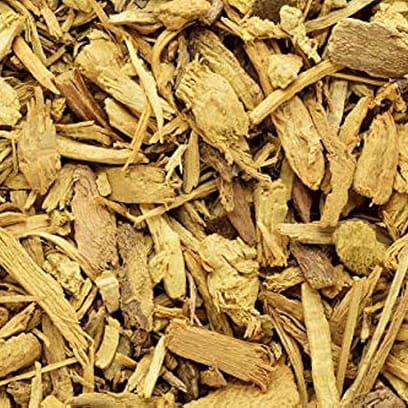
Daruharidra (Berberis aristata)
Explore the uses, benefits, and medicinal properties of Daruharidra (Berberis aristata), also…
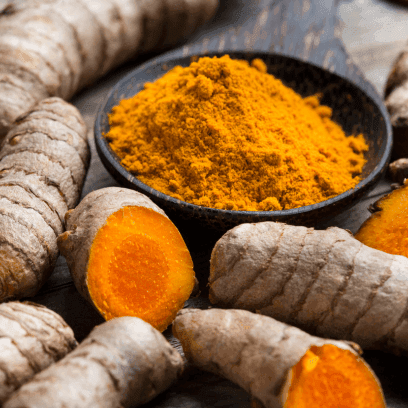
Haridra (Curcuma longa)
Discover the uses, benefits, and medicinal properties of Haridra (Curcuma longa), also…
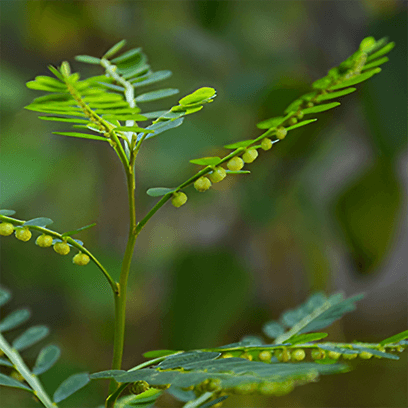
Bhumi Amla (Phyllanthus Niruri)
Know the Uses, Benefits and Medicinal Properties of Bhumi Amla (Phyllanthus Niruri).…

